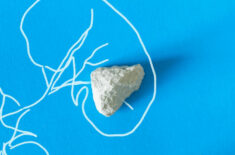Overview
Bee stings are painful.
Even mild reactions result in sharp pain, swelling, and inflammation followed by intense itching at the sting site.
Allergic reactions in adults tend to be more severe than in children and can include trouble breathing, dizziness, loss of consciousness, and swelling of the tongue and throat.
When honeybees sting, they die automatically as their stinger is connected to their abdomen and digestive organs.
On the other hand, wasp stings are different in that a wasp can sting you several times during an attack.
If you’ve been stung by either, remove the stinger and thoroughly wash the area with soap and warm water.
You can use essential oils and aromatherapy as a natural solution for cleaning and disinfecting the sting site.
You can take an over-the-counter antihistamine like Benadryl to get ahead of the swelling and use a hydrocortisone cream to relieve the inflammation and itchiness.
Essential Oils As Natural Remedies
Essential oils are highly concentrated plant extracts containing hundreds of active chemicals that interact with the body and accelerate healing. (essential oils 101)
Thanks to their many health benefits and medicinal properties, the use of essential oils (EOs) as home remedies has increased in popularity.
EOs are widely used in many cleaning and skincare products.
Many EOs possess potent antiseptic, antibacterial, and anti-inflammatory properties while also being effective for pain relief.
You can use them for soothing other insect bites too, and some oils like citronella and lemongrass also act as a natural repellent.
You can pair EOs with various methods and other natural remedies to treat bee stings:
- Baking soda – create a paste using a few drops of water and the essential oils listed below, and apply it directly to the skin to soothe and reduce pain.
- Natural bee honey – Ironically, raw honey can help reduce bee sting symptoms.
- Witch hazel – reduces inflammation, pain and can soothe itchiness.
- Apple cider vinegar – Dilute the vinegar with water and apply directly to the sting site. Some say this can help neutralize the bee venom.
The Best Essential Oils For Bee Stings
The three best essential oils are peppermint, tea tree, and lavender essential oil.
Peppermint
Thanks to its main active compound, menthol, peppermint oil is effective at pain-relieving and can even act as a light local anesthetic. It’s also antiseptic, anti-inflammatory, and antibacterial.
Lavender oil
Although lavender is usually considered an oil for stress relief, it’s also a very soothing and healing oil for your skin. It can accelerate wound healing and also acts as an anti-inflammatory and antiseptic.
Tea tree oil
This oil is a potent antiseptic that helps prevent infections while also accelerating wound and skin healing. Tea tree oil should never be ingested.
Other EOs that might help with bee stings are:
- Chamomile
- Frankincense
- Rosemary
How To Use Essential Oils For A DIY Bee Sting Remedy
Always dilute essential oils with a carrier oil like coconut oil before applying directly to the skin, especially if you’ve had a bee sting or bug bite.
Stick to 2-3 drops of EO per 1 teaspoon of carrier oil.
For a natural first aid treatment, apply the mixture to the sting site as soon after the sting as possible. (Tea tree oil is an excellent option to clean the sting site.)
For best results, apply it every 15 minutes for the first two hours after the bite.
Apply to the affected area at least twice a day after that – morning and night for best results.
Safety Concerns
When used safely and properly, EOs usually offer little to no side effects.
When used as natural treatments for bee stings or used topically for any condition, EOs must always be diluted in a carrier oil to prevent skin irritation and reactions. This is especially true for sensitive skin types.
It’s advisable to perform a patch test on a non-affected area of the skin and wait at least 24 hours to confirm no allergic reaction. (If you know you’re allergic to bee stings, don’t apply any EO to your skin before first checking with your doctor.)
If you experience any adverse reaction to any oil, discontinue use immediately and consult your healthcare provider.
Be aware of the contraindications for each oil you use. For example, you should avoid citronella oil if you’re pregnant.
You will also want always to choose high-quality, certified organic, therapeutic-grade, 100% pure essential oils to avoid diluted batches, and the addition of potentially harmful chemicals.
Do not ingest EOs without the supervision of an experienced aromatherapist or prior consultation with your doctor.
If you spot a beehive log, walk away and do not touch it, move it, or disturb it.












